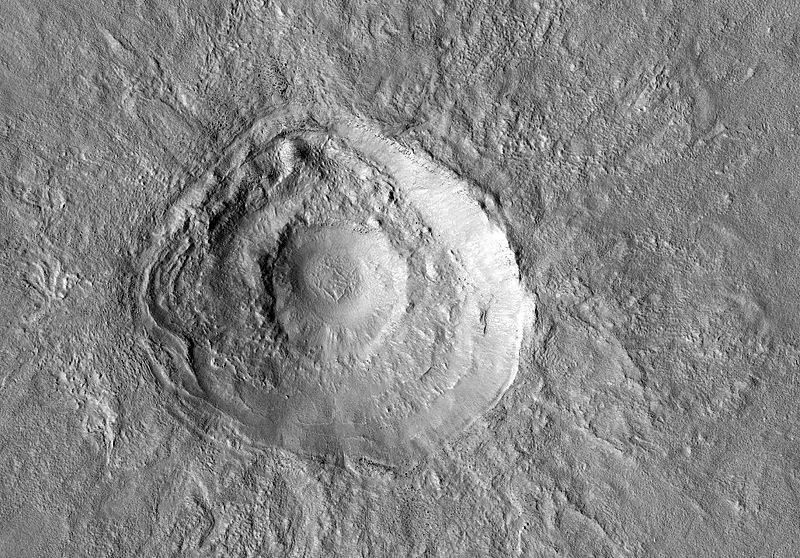Image: Nested Craters on Mars

Description: Impact craters that are only a few kilometers in size on Mars usually have simple bowl shaped interiors with craters in weaker material being larger than craters in stronger material. Occasionally though, nature is more complicated and these simple rules don't apply. One such case is shown here where is appears as if there are craters nested within each other. These nested craters are probably caused by changes in the strength of the target material. This usually happens when a weaker material overlies a stronger material. We can use craters like this to tell us something about what lies below the surface. What could be causing the change in strength in the subsurface? Mars has a lot of ice in its terrain near the surface. This ice-rich layer could be the weaker material and the deeper ice-free layer could be the stronger material. Written by: Shane Byrne (1 August 2012) Size of the crater is 5 km (an image with scale) Location: 40.104° N, 125.005° E
Title: Nested Craters on Mars
Credit: http://hirise.lpl.arizona.edu/ESP_027610_2205
Author: NASA HiRISE camera, Mars Reconnaissance Orbiter.
Permission: This file is in the public domain in the United States because it was solely created by NASA. NASA copyright policy states that "NASA material is not protected by copyright unless noted". (See Template:PD-USGov, NASA copyright policy page or JPL Image Use Policy.) Warnings: Use of NASA logos, insignia and emblems is restricted per U.S. law 14 CFR 1221. The NASA website hosts a large number of images from the Soviet/Russian space agency, and other non-American space agencies. These are not necessarily in the public domain. Materials based on Hubble Space Telescope data may be copyrighted if they are not explicitly produced by the STScI.[1] See also Template:PD-Hubble and Template:Cc-Hubble. The SOHO (ESA & NASA) joint project implies that all materials created by its probe are copyrighted and require permission for commercial non-educational use. [2] Images featured on the Astronomy Picture of the Day (APOD) web site may be copyrighted. [3] The National Space Science Data Center (NSSDC) site has been known to host copyrighted content even though its photo gallery FAQ states that all of the images in the photo gallery are in the public domain.
Usage Terms: Public domain
License: Public domain
Attribution Required?: No
Image usage
The following page links to this image:

